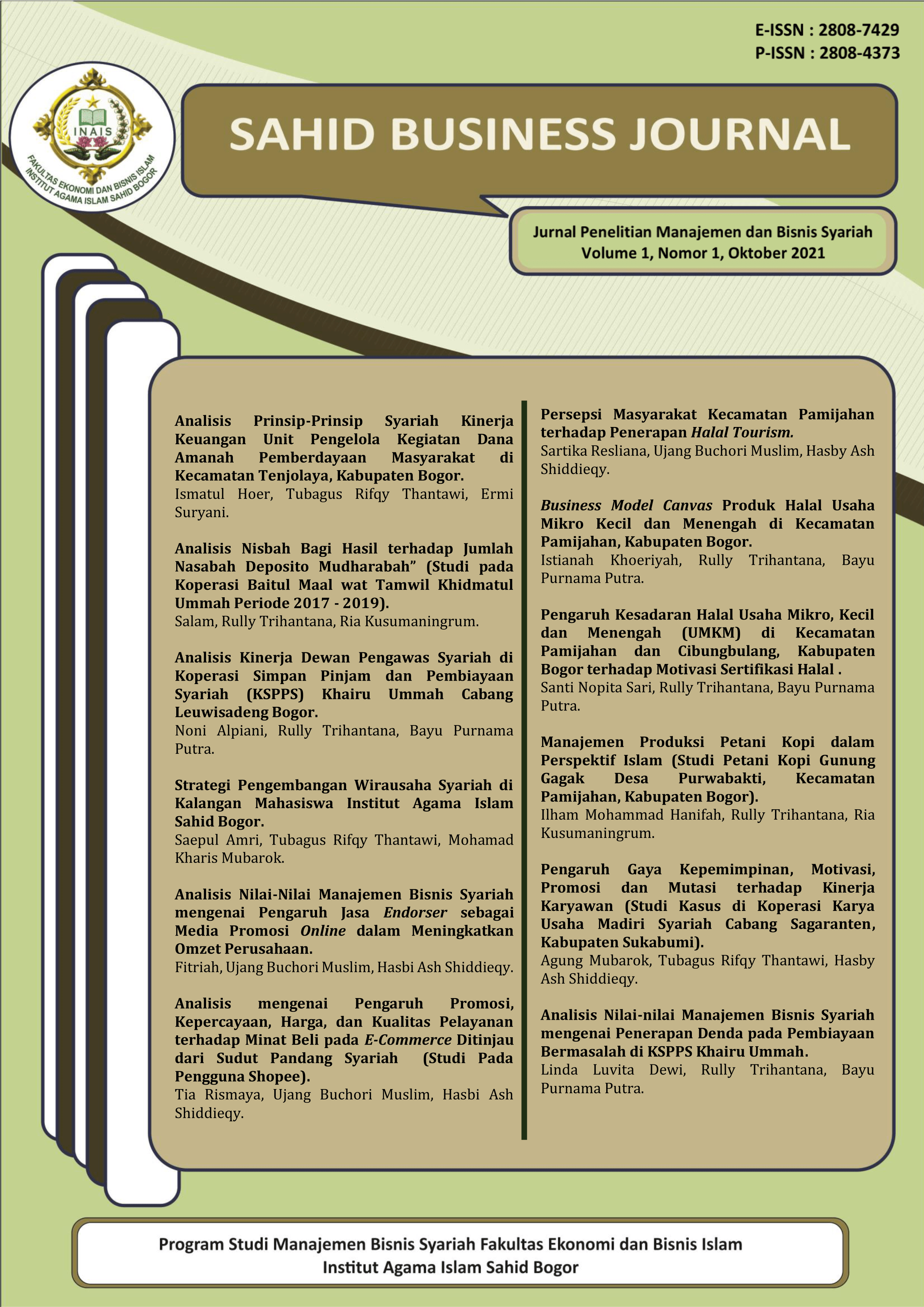BUSINESS MODEL CANVAS PRODUK HALAL USAHA MIKRO KECIL DAN MENENGAH DI KECAMATAN PAMIJAHAN BOGOR
DOI:
https://doi.org/10.56406/sahidbusinessjournal.v1i01.9Kata Kunci:
Business Model Canvas, Halal Products, Micro, Small and Medium EnterprisesAbstrak
Bogor Regency is a part of West Java Province which is quite rich in natural and human resource potential. The dynamic development of the economy, population and education also affects the increasing demand for food products in Bogor Regency. The number of MSMEs in Pamijahan Bogor do not have a halal certificate for the products they produce. Meanwhile, the halal certificate for food or beverage products is very important for the Muslim community, given the fact that the majority of the population in Pamijahan Bogor is Muslim. This research uses descriptive qualitative analysis method, with a management tool, namely the Business Model Canvas (BMC). BMC formulations are used for three MSMEs in the Pamijahan Bogor area, namely: (1) Rincik Manik Business, (2) RC Donuts Business, (3) Arema Meatball Business. The formulation consists of nine elements, namely (1) customer segment, where the majority of MSMEs use the mass market, the consumer market (Business to Consumer) and some use the reseller market (Business to Business). (2) The proportion of values, namely having a distinctive taste, using quality and original materials, in accordance with the principles of Islamic law, and a place that is easy to find. (3) Channels, using the Direct system, namely consumers who come directly to the UMKM places, and Indirect, namely through retailers / partners for those who already have partners. (4) Customer relations, namely retention (retaining) customers by making good direct interactions with employees and consumers. (5) Revenue streams, only from product sales. (6) Main resources, consisting of business premises, motorbikes, production and sales equipment and equipment, SIUP, brands, partnerships, and private capital. (7) Key activities, consisting of production, distribution and marketing of products to be sold. (8) Main partnerships, namely suppliers of raw materials and business partners. (9) Cost structure, consisting of building rental costs, electricity costs, raw material costs, employee salary costs, employee consumption costs, maintenance costs, waste costs, and water costs.
Unduhan
Diterbitkan
Versi
- 2022-02-26 (5)
- 2021-10-19 (4)
- 2021-11-03 (3)
- 2021-11-03 (2)
- 2021-11-03 (1)




















